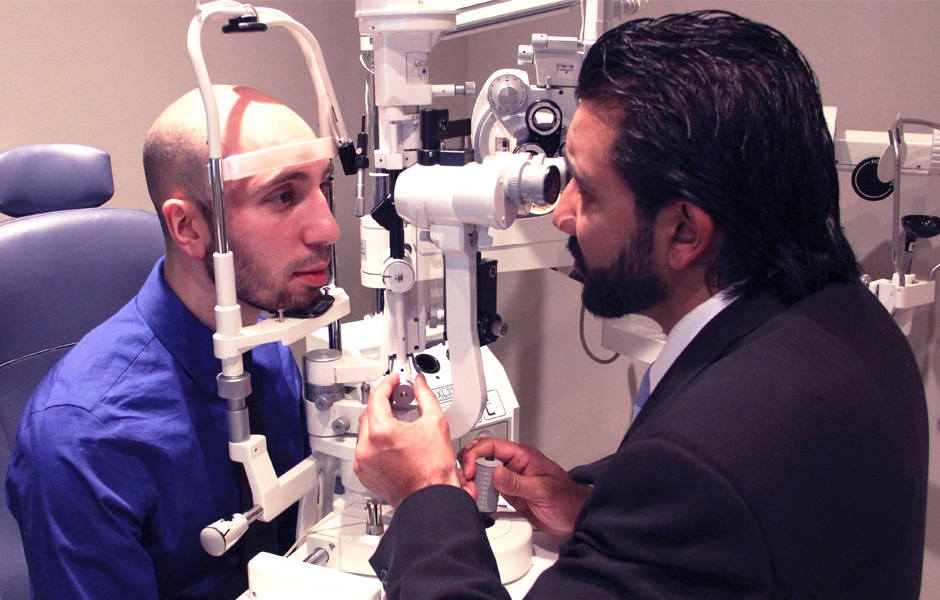Cardiologist Andalusia: Holistic Method to Heart and Eye Wellness
Cardiologist Andalusia: Holistic Method to Heart and Eye Wellness
Blog Article
Understanding the Different Vision Adjustment Procedures Available for Clearer Sight
In the world of vision adjustment treatments, a wide range of alternatives exist to resolve refractive errors and provide people with more clear view. From the extensively recognized LASIK surgical treatment to much less invasive procedures like PRK and implantable lenses, the field of ophthalmology supplies an array of methods customized to match different demands and preferences. Each procedure features its own set of considerations, advantages, and potential dangers. Recognizing the subtleties of these vision modification methods is vital for making notified decisions concerning one's aesthetic health and wellness. Allow's explore the ins and outs of these treatments and clarified the course to achieving improved vision quality.
LASIK Surgical Procedure
LASIK surgery is a common refractive treatment utilized to correct vision issues such as nearsightedness, farsightedness, and astigmatism. This medical technique, which represents Laser-Assisted sitting Keratomileusis, aims to improve the cornea to enhance exactly how light is focused on the retina, inevitably improving vision clearness. Throughout the treatment, a slim flap is produced on the cornea, and a laser is utilized to eliminate precise amounts of cells to improve it suitably. This reshaping permits light to be accurately concentrated onto the retina, correcting refractive errors.
Among the main advantages of LASIK surgery is the rapid enhancement in vision experienced by patients. Several individuals observe a considerable improvement in their sight promptly after the treatment. Furthermore, most patients report very little pain and pain during the surgical treatment and recovery period. The recovery time for LASIK is relatively fast, with several individuals returning to their everyday tasks within a day or 2 post-operation. On the whole, LASIK surgery is a preferred choice for people looking for a lasting solution for their vision troubles.
PRK Treatment

PRK is a suitable choice for individuals with slim corneas or those at a higher threat of eye injuries, as it does not involve creating a corneal flap. The healing process for PRK is a little longer contrasted to LASIK, as the epithelium needs time to regrow. Individuals may experience discomfort and blurred vision for a couple of days adhering to the procedure.
Regardless of the longer recovery time, PRK can yield exceptional lead to vision enhancement, making it a useful alternative for those who might not be suitable candidates for LASIK surgical procedure. - Eye Center Andalusia
Implantable Lenses
In comparison to PRK where the cornea is improved straight, implantable lenses use an additional technique for correcting vision by putting artificial lenses inside the eye. This treatment is particularly useful for people with high levels of farsightedness, astigmatism, or nearsightedness who may not appropriate prospects for laser surgeries like LASIK or PRK.
Implantable lenses, likewise referred to as phakic intraocular lenses, job by supplementing the eye's natural lens with a fabricated one. These lenses can be put before the natural lens (anterior chamber) or behind the iris and in front of the natural lens (posterior chamber) By changing the power and positioning of these lenses, ophthalmologists can properly correct refractive mistakes and improve visual acuity.
One benefit of implantable lenses is that they are detachable and exchangeable, providing adaptability for future changes. As with any kind of medical procedure, there are threats involved, such as infection or cataract formation. Individuals taking into consideration implantable lenses should talk to an eye care professional to identify one of the most ideal alternative based upon their private needs and eye health and wellness.
Corneal Rings

The procedure for placing corneal rings is minimally invasive and relatively quick, typically carried out as an outpatient procedure. During the surgical procedure, the ophthalmologist makes a tiny cut in the cornea and inserts the rings at a particular depth. As soon as in position, the rings help to reshape the cornea, giving a smoother surface for light to enter the eye, which can result in more clear vision.
Corneal rings are considered a relatively easy to fix procedure, as they can be removed or changed if essential. While they may not entirely remove the need for glasses or contact lenses, corneal rings can dramatically enhance vision top quality and general aesthetic convenience for people with keratoconus or various other corneal abnormalities.
Refractive Lens Exchange
Adhering to the adjustment of corneal abnormalities with procedures like corneal rings, an additional vision improvement method that can attend to refractive mistakes is Refractive Lens Exchange (RLE) RLE is a procedure that entails changing the eye's natural lens with a synthetic intraocular lens (IOL) to deal with refractive errors such as presbyopia, farsightedness, and nearsightedness. This procedure is specifically helpful for individuals that might not be appropriate prospects for procedures like LASIK or PRK because of factors such as slim corneas or high refractive mistakes.
Recuperation time for RLE is fairly quick, and clients can expect improved vision soon after the procedure. As with any type of medical procedure, prospective dangers and difficulties exist, so a complete consultation with an eye care professional is essential to identify if RLE is the best vision modification alternative.
Conclusion

In the world of vision modification procedures, a multitude of alternatives exist to address refractive mistakes and offer people with clearer view.LASIK surgical procedure this content is a common refractive procedure made use of to fix vision issues such as nearsightedness, astigmatism, and farsightedness.While also a typical refractive treatment, the PRK (Photorefractive Keratectomy) method differs from LASIK surgery in its approach to dealing with vision issues.Complying with the improvement of corneal irregularities with treatments like corneal rings, an additional vision improvement technique that can deal with refractive mistakes is Refractive Lens Exchange (RLE) go to the website LASIK surgical procedure, PRK treatment, implantable lenses, corneal rings, and refractive lens exchange are all alternatives that can address various vision concerns.
Report this page